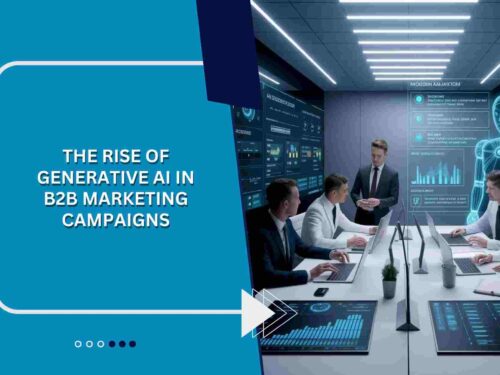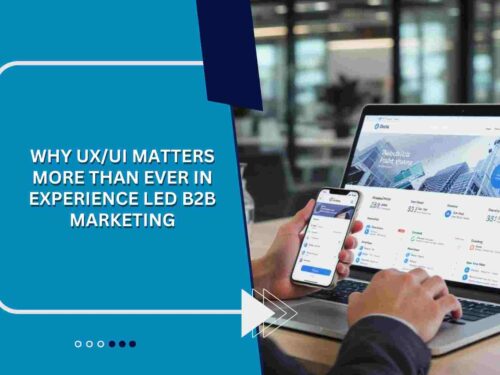In the modern business landscape, digital marketings have emerged as the central force behind B2B success. With technology rapidly reshaping buyer behavior, traditional marketing models are no longer sufficient to attract, engage, and convert business clients. Today’s B2B decision-makers demand relevant, personalized, and real-time digital experiences. This shift has firmly positioned digital marketings not just as a support mechanism but as the backbone of growth, scalability, and competitive advantage in the B2B space.
As competition intensifies across industries, the importance of building strong digital strategies that align with evolving buyer journeys cannot be overstated. B2B companies that invest in digital marketings are able to nurture high-quality leads, accelerate sales pipelines, and build lasting client relationships in a measurable and scalable way.
The Digital Transformation of B2B Buyer Behavior
The traditional B2B sales process, once driven by face-to-face meetings, cold calls, and trade shows, has undergone a radical transformation. Modern B2B buyers conduct extensive online research before engaging with sales representatives. According to industry data, nearly 70% of the B2B buyer journey is now completed digitally before any direct contact with a vendor occurs.
This means that digital marketings have become the first and often most influential touchpoint in the buyer’s decision-making process. Through SEO, content marketing, paid campaigns, email automation, and social media, businesses can educate, influence, and guide buyers before sales even enter the conversation. Companies not leveraging these tools risk being invisible in a buyer’s shortlist.
Data-Driven Marketing: Precision at Scale
Digital marketings thrive on data. Every action taken online from clicks to downloads to engagement with a video is a signal that can be measured and analyzed. This allows B2B marketers to understand their audience’s needs with unparalleled accuracy and personalize campaigns at scale.
Through data-driven digital marketings, B2B organizations can segment their audience, tailor content to specific industries or job roles, and align messaging based on intent signals. Tools like Google Analytics, HubSpot, and LinkedIn Campaign Manager enable deep insights into campaign performance and user behavior, driving smarter decision-making.
By tracking metrics like cost-per-lead (CPL), return on ad spend (ROAS), conversion rates, and lead quality scores, businesses can optimize their strategies continuously. Data ensures that marketing budgets are spent on high-impact activities rather than guesswork.
SEO: The Gateway to Visibility in B2B
Search engine optimization (SEO) is a foundational pillar of digital marketings that B2B businesses can’t afford to overlook. When potential buyers search for solutions, vendors that appear at the top of search engine results are more likely to gain attention and trust.
By creating SEO-optimized content around high-intent keywords relevant to target industries, B2B brands can position themselves as thought leaders. Blogs, whitepapers, and case studies tailored for specific pain points not only drive traffic but also establish credibility.
For B2B companies, ranking for long-tail, niche industry keywords often translates to high-quality, conversion-ready leads. An SEO strategy integrated into the overall digital marketings approach ensures consistent visibility throughout the buyer journey.
Content Marketing: Building Trust and Authority
B2B transactions involve higher price points and longer sales cycles, which means trust and authority are essential for conversions. Content marketing, a core strategy within digital marketings, helps build this trust by educating buyers, addressing concerns, and showcasing expertise.
From industry reports and webinars to case studies and whitepapers, B2B content needs to be insightful, data-backed, and strategically aligned with the buyer journey. Early-stage content should focus on awareness and thought leadership, while mid-funnel pieces should guide prospects through evaluation and comparison stages.
When content is distributed through email newsletters, LinkedIn posts, syndication platforms, and landing pages, it multiplies its impact. Great content nurtures prospects over time, building brand loyalty even before direct engagement.
Social Media: Driving Engagement and Brand Positioning
In the B2B realm, social media is no longer just a platform for consumer engagement it’s a powerhouse for lead generation, employer branding, and thought leadership. LinkedIn, Twitter (X), and even YouTube have become critical channels in B2B digital marketings, enabling businesses to reach decision-makers, influencers, and niche communities.
Regular sharing of relevant content, industry news, and insights boosts brand visibility and allows for two-way communication with your target audience. LinkedIn in particular is instrumental for account-based marketing (ABM), where businesses engage specific high-value accounts through sponsored content and direct messaging.
Live streams, behind-the-scenes stories, and leadership interviews help humanize the brand, while analytics tools offer real-time data to optimize engagement.
Email Marketing and Automation: Personalized Outreach at Scale
Email remains one of the highest ROI channels in digital marketings, especially in B2B. With automation tools like HubSpot, Mailchimp, and Marketo, businesses can send tailored, behavior-triggered emails to nurture leads across the sales funnel.
Segmentation ensures that CTOs in manufacturing receive different messages than CMOs in fintech. Drip campaigns guide prospects from awareness to conversion by delivering the right content at the right time. When integrated with CRM systems, email automation provides a complete picture of prospect engagement and buying readiness.
In an era where personalization matters more than ever, email marketing enables hyper-targeted outreach that strengthens relationships and drives conversions.
Paid Advertising: Accelerating Lead Generation
While organic methods build long-term momentum, paid advertising offers immediate visibility and rapid lead generation. Platforms like Google Ads, LinkedIn Ads, and programmatic ads, display networks ads allow B2B marketers to target based on industry, job role, company size, and even specific intent signals.
Digital marketings enable smart retargeting strategies where prospects who’ve visited your website or engaged with a webinar are shown relevant ads to keep your brand top-of-mind. This reinforces trust and shortens the path to conversion.
Ad campaigns also serve as valuable A/B testing grounds for messaging, offers, and creatives. Continuous optimization of copy, visuals, and targeting leads to better ROI and more qualified leads.
Marketing and Sales Alignment through CRM Integration
One of the greatest advantages of digital marketings in B2B is the ability to align marketing and sales teams around shared goals and metrics. CRM integration allows for seamless tracking of leads, interactions, and pipeline progression.
Sales teams can access rich prospect insights generated from digital campaigns such as content viewed, pages visited, or forms filled enabling more informed conversations. This alignment leads to shorter sales cycles and improved close rates.
Modern CRMs like Salesforce or Zoho integrate effortlessly with marketing automation tools, bridging the gap between outreach and follow-up. The result is a connected, data-driven ecosystem that powers efficient growth.
Video Marketing: Visual Storytelling for Complex Solutions
In a world driven by visual content, video marketing has taken center stage in digital marketings. For B2B companies offering complex solutions, videos simplify messaging and bring products or services to life.
Explainer videos, product demos, customer testimonials, and webinars help capture attention, convey value propositions, and build trust. Hosting video content on platforms like YouTube, LinkedIn, and your own site boosts engagement and extends reach.
Video is also highly measurable, with metrics like watch time, engagement rate, and click-throughs offering real-time insights for optimization.
Analytics and Continuous Optimization
The true strength of digital marketings lies in its measurability. Every campaign, channel, and tactic can be tracked, analyzed, and optimized. This agility gives B2B marketers a continuous improvement cycle that traditional methods simply can’t offer.
With access to dashboards and KPIs, marketing teams can identify what’s working, what’s not, and where the highest ROI lies. Campaigns are no longer built on assumptions they’re engineered on performance metrics and real-time feedback loops.
A/B testing, heatmaps, user journey analysis, and behavioral tracking further refine the digital strategy. This analytical approach makes digital marketings not just powerful, but indispensable.
Future-Proofing B2B Growth with Digital Marketings
As B2B markets become increasingly global and tech-driven, digital marketings offer the tools needed to stay agile, visible, and relevant. Companies that invest in digital infrastructure today will be better equipped to meet changing buyer demands, innovate at scale, and compete in dynamic markets.
Emerging technologies like AI, chatbots, predictive analytics, and voice search are further shaping the future of B2B digital marketings. Staying ahead requires not just adoption of tools but a mindset of experimentation, adaptation, and customer-centricity.
Ready to transform your B2B marketing strategy? Contact us at Acceligize.




